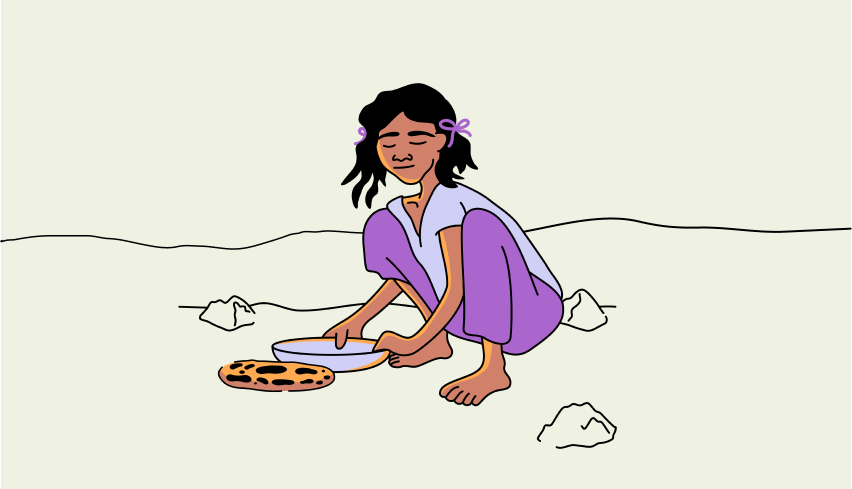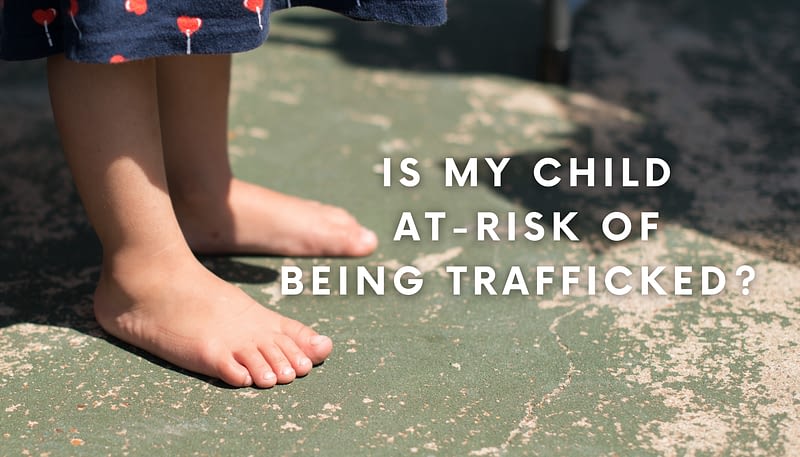By: SOS International
If you’ve ever worried that your child was at-risk of being trafficked, you’re not alone. Trafficking is scary and confusing. Every other day, a new video on social media shows up with someone claiming, “I was nearly trafficked at Walmart,” or warning people to beware of a new trafficking scam like zip ties on cars. With so much misinformation floating around, it’s hard to know what to believe. As a result, we become fearful and preoccupied with fighting a threat that is likely not knocking at our door.
Trafficking is real. Child trafficking is real. It is the fastest-growing crime in the world. To effectively fight trafficking, you need to understand who traffickers target, and it’s likely not you or your children.
How great of a risk is your child at?
Let’s start with some good news: the number one reason you can trust that your children are safe is that you are asking this question. Children who are at-risk of being trafficked have no one asking if they are at-risk. Nearly 20% of children in Human trafficking cases experience some form of family dysfunction. In a home life marked by misbehavior, conflict, or abuse, parents may not be thinking about their children’s risk of being trafficked. A home like this can have a detrimental effect on all aspects of a child’s life. In many cases of family dysfunction, there are parents or guardians who may not be concerned about their children’s safety. If you are a parent who is worried that someone may try and traffick your child, that is a testament that you have already created a secure environment for your child.
The reality is that kidnapping does happen in trafficking cases, but it’s not as common as you may think. About 6% of human trafficking instances reported to the National Human Trafficking Hotline(NHTH) involve kidnapping. Movies like Taken and Sound of Freedom have given perspective to the horror of abduction in trafficking, but they highlight the most intense and rarest form in which people get dragged into trafficking. Traffickers rarely target strangers or people they don’t know because of the risk it would involve (ironically, the traffickers in Taken prove that, albeit in a sensationalized Hollywood way). Victims are trafficked by a family member or caregiver 33% of the time. This isn’t a call to run background checks on your family and friends. There is a lot of nuance behind why familial trafficking occurs. It’s safe to say that the chances of your child being trafficked from a caring home and family are not as high as you may worry.
Build your awareness
Even if your children are in an environment that protects them from traffickers, it’s beneficial for you and your family to know the patterns of trafficking to keep you and others safe. Awareness is vital to keeping children safe. Although traffickers can change tactics, their patterns remain the same.
One huge area of safety that impacts virtually every family is safety on the internet. The internet has become the primary place for trafficking recruitment. In cases reported to the NHTH, 65% of victims said that they were recruited online. Recruitment online happens through dating apps, social media, chat rooms, and sometimes job postings. Having conversations with your children and promoting trust is key for internet safety. Make sure your children know about the dangers present on the internet and the risks involved in talking to strangers or giving out information. If you want to learn more about internet safety, check out the resources below.
It’s also crucial to develop a fact-based approach when building your awareness. Don’t take everything you hear about trafficking at face value – look for the facts. Focusing on a victim-centric perspective and listening to the experiences of trafficking survivors will provide you with accurate and reliable information that you can use to educate your family about trafficking.
Who is most at-risk?
The presence of force, fraud, and coercion defines human trafficking. Abducting victims would fall under the “force” category, but fraud and coercion are arguably the most prevalent. Traffickers want to take advantage of the most vulnerable: those who lack basic needs. Lack of food, water, or other resources are vulnerabilities often preyed on. Nearly 51% of global cases of trafficking involve pre-existing economic needs. Traffickers prey on those who lack basic needs because it is easier to exploit people who are in desperate situations.
In many developing countries, communities do not have close access to water. The burden of gathering water for the day falls on women and girls who walk an average of 3.5 miles daily. Many of these girls miss essential school time, impacting their future prospects, and traffickers often lurk along these retreated paths. A child isolated with no education is vulnerable to traffickers.
Traffickers don’t just use these tactics in developing countries; they prey on a lack of basic needs all over the world. When a family or child is desperate for food and water, traffickers find an easier foothold to trick and trap victims.
Immigration status is another commonly exploited factor. 54% of reports to the NHTA included people who had recently moved to the US and in 10% of cases worldwide. This happens when a trafficker uses the immigration status of an individual against them, threatening to call the authorities on them if they do not comply. This doesn’t just include illegal immigrants. People who legally immigrate but do not know some of the intricacies of their rights can be tricked as well. This is a definitive form of fraud and coercion.
Traffickers aren’t plotting to lure away children in loving homes with food on their table and clothes on their backs. They aim to take advantage of children who are in isolation with nobody watching over them. These children need someone to care for them and want a place to belong, as every child does. The consequences are devastating when a child is isolated or cut off from a caring community. This is why you hear the stories of teens trafficked by dating someone significantly older than them or why 1 in 5 runaway or homeless youth end up as a trafficking victim.
What you can do
Now that you know that your children have an environment that helps keep them safe from traffickers, how can you turn that concern toward children who are actually vulnerable to trafficking? Educating yourself on the facts and patterns of trafficking will help you to see the needs of others. Understanding how the lack of basic needs makes children vulnerable to trafficking helps you to make sense of their impact—knowing that when you give to an organization like SOS, you are helping to secure the world for an at-risk child.
Getting involved in your community is another way to help at-risk children fight childhood isolation. Helping out with local food pantries or jumping into mentoring at a local school you can impact a child’s life. Volunteering gives you the chance to be present in the life of a child who needs to know what a caring community of adults looks like. It gives them a space to belong and opens up a channel of trust to help keep them from falling into the trap of human traffickers.
Rest assured that your child has everything they need to stay safe from traffickers. Not only can you build a safe place for your child, but you can also create safe places for at-risk children in your community and worldwide!






